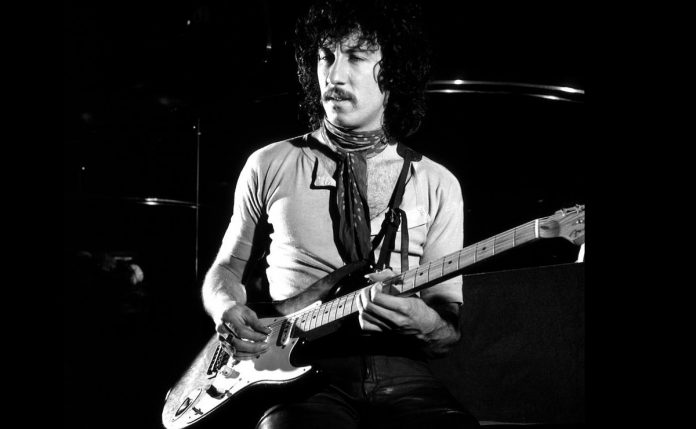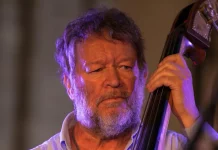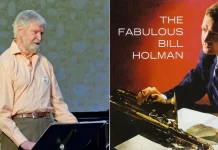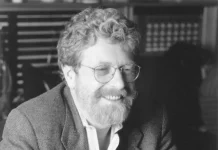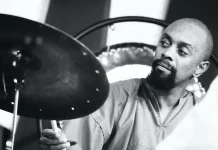He was a blues player and he wasn’t a jazz player – especially in the more strictly defined terms of the 1960s, when the jazz-guitar hegemony was Charlie Christian, Wes Montgomery, Jim Hall and so on. But Peter Green, as guitarist and composer, had qualities that impinged strongly on jazz. In those days blues was anyway welcomed under the umbrella of jazz. Chances are there lurks a review of Peter Green somewhere in Jazz Journal’s 1960s archive, though the greater welcome usually was for black players brought in under the aegis of Chris Barber and the like; there was less sympathy for white players of the British blues boom, possibly because they were associated in critics’ minds with pop and rock, possibly because they were seen as unauthentic.
But Green was a masterful blues player, his playing distinguished in particular for the detail and delicacy of his touch, phrasing and pacing. Take, for example, his measured, minimalist and exposed playing on his own Merry Go Round. As any guitarist might tell you, it’s not easy to capture the restraint (no doubt unintentional) in his phrasing in that intro, nor the placement of those bare but juicy sliding sixth and ninth chords, powerfully set off by the sparse surroundings. The mainstream media almost always settle on the high-profile Eric Clapton, Jimi Hendrix, Jeff Beck and Jimmy Page as the outstanding guitarists of those days, but Green, arguably, was the most expressive of them all. He also had a sound as a blues player that was particularly lucid – his signature sound in early Fleetwood Mac was a clean tone, perhaps at the edge of breakup, without the distortion which became the irresistible default for many.
Then there were the compositions. He was, like many others in the 1960s, in the vanguard of electric music, working with a virtually empty canvas. No-one had had the technology before and the field was open – in contrast to the essentially regurgitative position of so-called progressive jazz or today, electronic or otherwise. Nobody (except maybe someone in the Hollywood film studios?) had produced the range of sounds guitarists such as Green did – as composer and instrumentalist – in the 1960s.
There’s the other way in which Green, to my mind, is with jazz: there’s a range in his compositions and guitar playing that reaches beyond their nominally blues-rock orbit. Even in his most demonstrative blues playing there was, in the quality of restraint, surely an impressionist behind the scenes. That impulse was fully developed in Albatross, with its shades of Satie in tone and harmony, its impressionist evocation of avian floating and gliding. In this piece Green developed the tone-poetic resources of the electric guitar, amplification, reverb and possibly other effects to an extent that left later so-called innovators such as Frisell and Rypdal with little more of essence to add to the guitar vocabulary, despite the protestations of their advocates.
The corollary of restraint is silence and Green knew its value too, using it as part of an armoury of sophisticated arranging techniques. For example, Oh Well Part 1 rocks loudly in its second riff, but notice the potent moment of withdrawal and contrast when the solo muted cowbell appears, and not for one bar but two. Notice also the reflective mood of Oh Well Part 2, its flute and shimmering backdrop suggesting Green might adequately have subbed for Ennio Morricone. In the same tune, on Part 1, based pretty much on call-and-response blues, the riff technically and content-wise exceeds what a typical US bluesman might produce, effectively extending the donor idiom. There’s no chromaticism beyond the blues scale, but the ascending line that closes the second riff shows an ingenuity in phrasing that suggests the sophistication of jazz-rock lines of a decade hence.
Lastly, for examples, there’s Black Magic Woman, a tune that Wayne Shorter could have written. It sneaked past the pop censors to inveigle a minor Latin blues into the pop charts, especially in Santana’s hands.
If any further confirmation of Green’s affinity with the other world, the jazz world, were needed, I saw him in the 1990s with guitar in Andy’s Guitar Workshop, Denmark Street, London, not rocking or strutting his reputation amongst the denizens of Tin Pan Alley but but noodling, anonymously, absently. He was a thinker, abstracted and possibly abstract.

